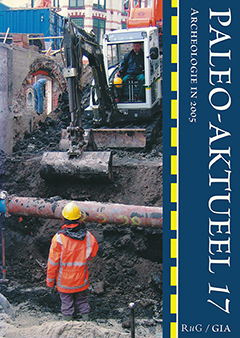Jeugdige vuursteenbewerkers bij het kampvuur: een andere visie op Maastricht-Belvédère, Site K (L.)
Samenvatting
Young flint-knappers at the camp-fire: a different view on Maastricht-Belvédère, Site K (Limburg). Prompted by the recent book by De Loecker about the main Saalian find level in the Maastricht-Belvédère Quarry, the author discusses some aspects of the Early Middle Palaeolithic Site K. First it is argued that learners in the art of flintworking were active here: most probably children. The reason is the presence of relatively many cores showing phenomena such as stacked steps and face battering, which are characteristic of learners’ output according to experiments by Shelley. The absence of the classic Levallois technology, and the use of simpler discoidal cores instead, is seen as an adaptation to children who are learning to knap flint, rather than as a result of poor-quality raw material. Secondly, the spatial distribution of the relatively many burnt flint artefacts (5.7%) is analysed. A distribution map showing the proportions of burnt artefacts in all square metres with at least 10 artefacts reveals two clusters with locally high percentages in the southern part of the excavated area. A statistical analysis, involving chi-square or binomial tests for each square metre, reveals that these clusters can hardly be the result of chance, and may therefore be interpreted as hearth locations.

